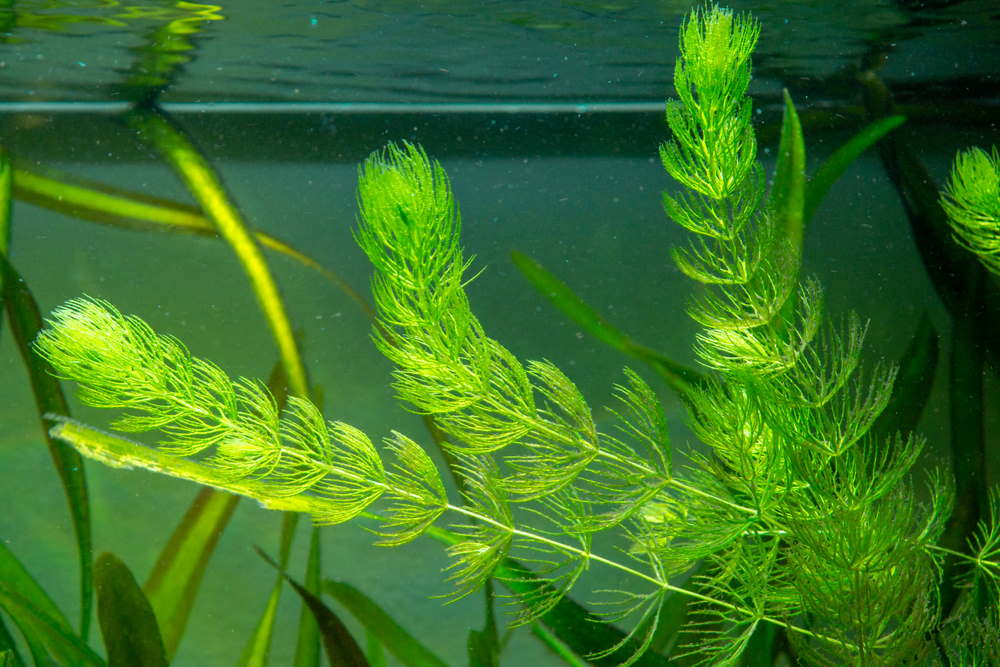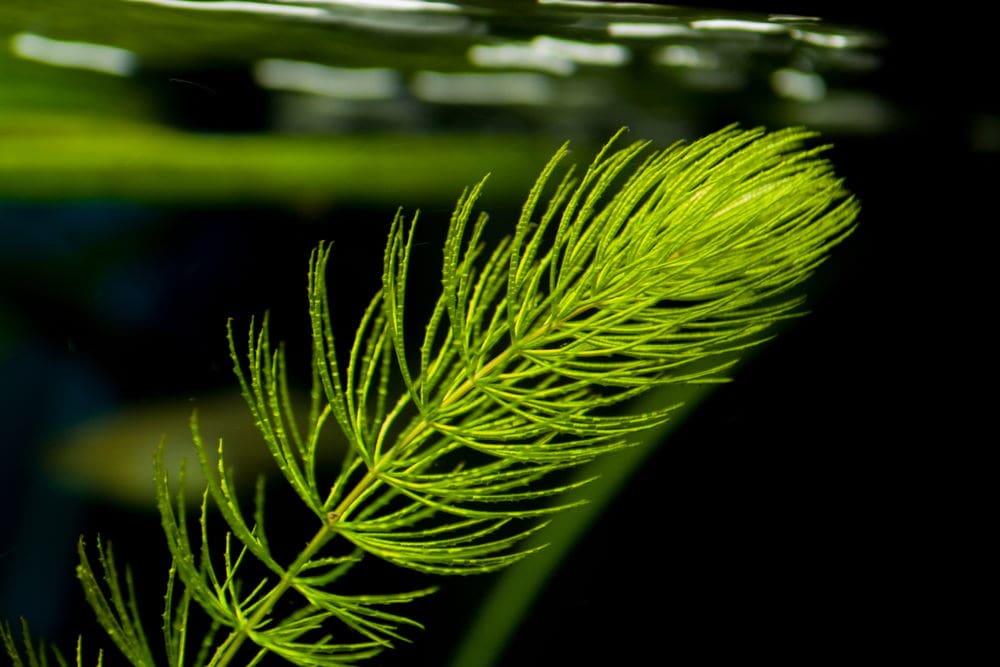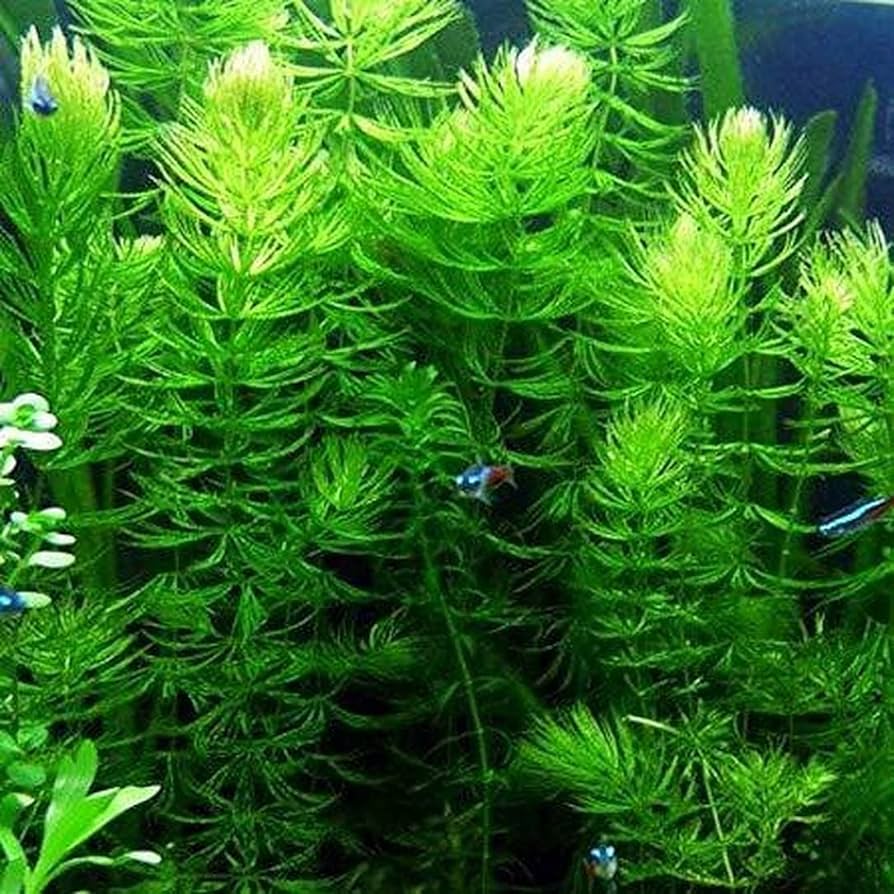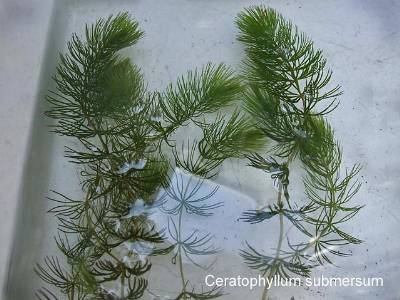In the realm of aquatic vegetation, one plant stands out due to its unique morphology and adaptability: the Soft Hornwort. This article embarks on a journey to discern the ecological value and biological properties of this lesser-known, water-dwelling flora. As busy stirrings of life abound unseen beneath the water’s surface, it is crucial not only to recognize, but also understand the constituents of our freshwater ecosystems. Positioning the Soft Hornwort at the centre of our discourse provides a perceptive strand of insight into its distinct identity and phenomenal survival tactics in its watery home.

Overview of Soft Hornwort
Soft Hornwort, scientifically known as Ceratophyllum demersum, is a fascinating aquatic plant that thrives in both freshwater and brackish environments. Also known as coon’s tail, this plant flaunts a mesmerizing soft texture and intricate foliage that contribute to its captivating aesthetic appeal. Widely recognized by its distinct shape, the Soft Hornwort was discovered in the late 1700s and has since been subject to meticulous botanical research and observation.
Scientifically known as Ceratophyllum demersum
The Soft Hornwort, Ceratophyllum demersum, belongs to the Ceratophyllaceae family. It is considered a cosmopolitan species as it is found in every continent except Antarctica.
Other common names
Apart from Soft Hornwort, this plant is also referred to as coon’s tail, common hornwort, and rigid hornwort. These names often denote its unique physical characteristics or cultural associations.
Brief history and discovery
The Soft Hornwort plant was initially discovered and categorized by Carl Linnaeus in 1753. Ever since its discovery, the plant has elicited interest among biologists due to its distinct physical attributes and intriguing adaption to varying aquatic ecosystems.
Habitat and Distribution
Soft Hornwort thrives predominantly in freshwater environments, including brooks, rivers, ponds, and lakes. Its omnipresence can be accredited to its high adaptability characteristics. It has an uncanny ability to adapt to a variety of water conditions, which has led to its widespread distribution.
Regions with high prevalence
This hornwort species is generally found worldwide; however, it exhibits a high prevalence in regions with temperate climates, including parts of Europe, Australia, Asia, and Africa.
Ideal conditions for growth
Hornworts prefer slightly acidic water conditions with proper access to sunlight. A temperature range between 59-86 degrees Fahrenheit provides the most conducive environment for their growth.
Adapting to different water conditions
One of the remarkable attributes of Soft Hornwort is its adaptability to different water conditions. Its resilient nature enables it to survive in both freshwater and slightly brackish environments. Furthermore, it can tolerate a wide spectrum of water hardness and pH levels.

Physical Characteristics
Soft Hornwort boasts an intricate branching structure, characterized by soft, feathery leaves attached along a simple axis. These leaves, usually dark green or reddish-brown in color, yield a magnificent spectacle, especially when submerged in water bodies.
Description of leaves and stem
The leaves of Soft Hornwort are thin and dissected, giving them a feathery texture. They are dark green in color, thus adding to the plant’s aesthetic appeal. The stem of Soft Hornwort is flexible yet sturdy, allowing the plant to withstand varying water currents.
Color and texture
The plant’s color ranges from dark green to reddish-brown. This color change often depends on the surrounding water conditions and nutrient availability. The leaves’ texture contributes to the soft feel of the plant, thus attributing to its common name ‘Soft Hornwort’.
Seasonal changes in appearance
Like many aquatic plants, the appearance of Soft Hornwort may change with seasons as the plant adapts to varying water temperatures, light availability, and nutrient levels. It exhibits a more lush green appearance during the growth-friendly spring and summer seasons, while it tends to assume a darker hue during the harsher winter months.
Life Cycle and Growth
The life cycle of Soft Hornwort involves several stages, including germination, growth, maturity, and reproduction. The plant demonstrates an intriguing pattern of growth, marked by its capability to regenerate from fragments.
Stages of growth
The growth of Soft Hornwort starts with the germination of its seeds, followed by the development of rootless seedlings. Once matured, these plants reproduce primarily through fragmentation that further grow into a full plant.
Seed production and dispersal
The plant does not rely much on seeds for reproduction. However, when produced, seeds are usually very small and are dispersed in water. These seeds may either lead to new plant formations or may remain dormant for an extended period.
Longevity and methods of reproduction
Aside from sexual reproduction involving seeds, Soft Hornwort primarily propagates asexually through fragmentation. Broken fragments of stem or leaf can regenerate into a new plant, an attribute that aids its fast colonization and widespread distribution.

Ecological Role
Soft Hornwort, with its dense, feathery foliage, serves as an essential constituent of aquatic ecosystems. Evidence suggests its vital role in nutrient cycling, ecology, and water quality.
Role in water ecosystems
Soft Hornwort plays a crucial part in stabilizing water ecosystems. Its dense foliage provides an ideal habitat for aquatic invertebrates and a breeding ground for various fish species. It further helps decrease water temperature and contributes to oxygen production.
Interactions with other plants and animals
In terms of interspecies interactions, Soft Hornwort often competes with other aquatic plants for resources, but it also serves as a food source for certain herbivorous fish and invertebrates.
Impact on water quality
By absorbing excess nitrogen and phosphorous, Soft Hornwort aids in reducing nutrient levels in water bodies. Therefore, it plays an indirect role in combating the issue of water eutrophication and maintaining water quality.
Uses and Applications
Apart from its ecological significance, Soft Hornwort finds various uses in aquariums, medicinal science, and crucial scientific research.
Use in aquariums and ornamental ponds
Soft Hornwort is a preferred choice for aquariums and ornamental ponds, credited primarily to its exquisite appearance and easy maintenance. It creates an optimal environment for aquatic life in captive conditions and also helps maintain water quality.
Medicinal applications
While there are limited studies to back the claim, some traditional practitioners suggest the potential medicinal properties of Soft Hornwort. They contend this plant might exhibit antimicrobial and anti-inflammatory properties.
Research and scientific studies
Soft Hornwort has been a subject of scientific interest due to its peculiar growth habits and adaptability to diverse water conditions. It offers fertile ground for studies related to aquatic plant physiology, adaption strategies, and interactions within aquatic ecosystems.

Cultivation and Care
Despite being a hardy aquatic plant, Soft Hornwort requires certain conditions for optimal growth.
Growing conditions required
Soft Hornwort prefers slightly acidic to neutral water with a temperature range of 59-86 degrees Fahrenheit. While it can tolerate varying degrees of water hardness, medium hardness appears most conducive to its growth.
Common problems and solutions
Common problems that Soft Hornwort encounters include inadequate sunlight, nutrient deficiency, and poor water quality. An appropriate balance of suitable lighting, nutrient supplement, and regular monitoring of water quality can ensure the healthy growth of the plant.
Tips for successful cultivation
Ensure optimum sunlight exposure, maintain neutral to slightly acidic water pH, balance nutrient supply, and regular pruning can help keep Soft Hornwort healthy and visually appealing.
Conservation Status
While Soft Hornwort does not feature on the endangered species list, it has been subject to conservation efforts due to its ecological importance.
Threats and conservation efforts
The main threats to Soft Hornwort are water pollution and habitat degradation. Judicious use of fertilizers and effluent treatment before discharging into water bodies can help conserve the plant.
Status according to international conservation bodies
As per the International Union for Conservation of Nature (IUCN), Soft Hornwort does not fall under the threatened category. However, it underscores the plant’s ecological significance and advocates measures for its preservation.
Role of community in conservation
The community can play a pivotal role in the conservation of Soft Hornwort by reducing water pollution, preventing habitat destruction, and spreading awareness about the plant’s ecological role.

Threats and Challenges
Despite its resiliency, Soft Hornwort faces several threats.
Predation and competition
Soft Hornwort can become a target of predation by herbivorous fish. Moreover, in regions with diverse plant life, it might face stiff competition for resources.
Environmental threats
Environmental factors, like an abrupt change in water conditions, pollution, or high turbidity levels, can pose serious threats to the survival of Soft Hornwort.
Impact of human activities
Human activities, particularly pollution and habitat degradation, have emerged as significant challenges to the growth and distribution of Soft Hornwort.
Future Research and Potentials
Soft Hornwort, with its unique attributes, presents multiple avenues for future research and potential applications.
Areas of ongoing research
Current research focuses on the plant’s ability to absorb and reduce harmful nutrients from water bodies, its adaptability to varying water conditions, and potential medicinal applications.
Potential future applications
Soft Hornwort’s potential future applications include its use in wastewater treatment plants for nutrient reduction, contribution to climate change mitigation efforts through its ability to sequester carbon, and its potential medicinal properties.
Scientific breakthroughs related to Soft Hornwort
While there are no massive breakthroughs to mention yet, ongoing research on Soft Hornwort’s adaptability, its role in maintaining water quality, and its potential medical application promises exciting possibilities in the near future.